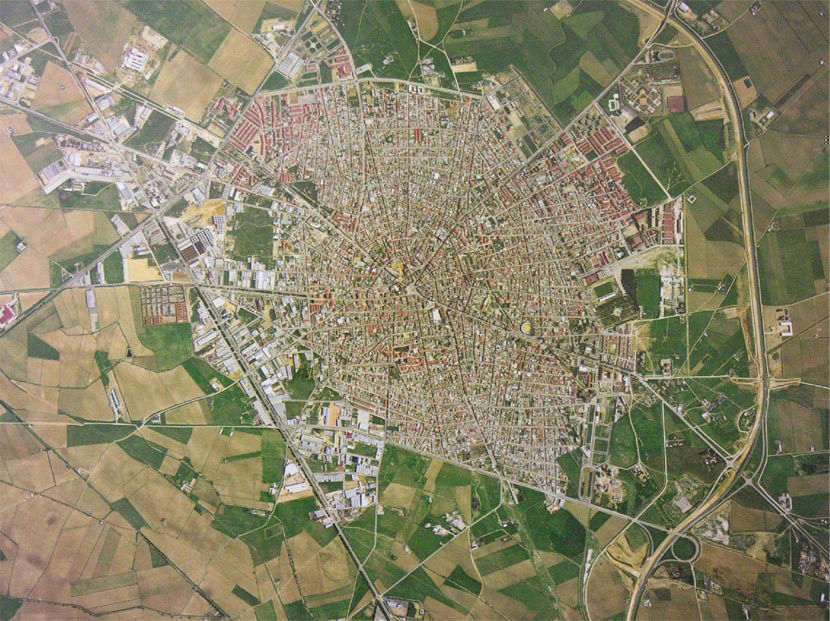

“Tomelloso is the name given to the poor faithful thyme that rises to glory on its own” - Eladio Cabañero
INTRODUCTION
Welcome to this audioguide of Tomelloso. Located in the land of Don Quixote, Tomelloso is a modern and active city, whose mature rural taste has been preserved and is in perfect harmony with the modern character of a city that continues to grow, a birthplace of many important artists and with an extensive dedication to wine. Its emblematic buildings, old distillery chimneys, caves and popular bombos are a sign of identity.
Together with the Quixote Route and Wine Route of La Mancha, its modernity and prosperity and the essence of its traditions create a mix that engrosses the visitor and invites to the best of memories.
Tomelloso is a welcoming and friendly city with a gastronomy based on products of the region, where tasting ratatouille, charcoal grilled meat, lamb stew, migas and gachas is a must. Its sweets and cakes are worth mentioning: hojuelas, flores, typical Easter pastries and those made with wine: musk cakes, mostillo and grape syrup.
Tomelloso, a Wine City par excellence, has the largest wine cooperative in Europe as well as its many small charming wineries, without forgetting its production of famous Brandies, such as Peinado and Casajuana, and distilleries. In addition to the wineries, the chimneys (remains of old alcohol factories, reaching up to 45 metres of height), bombos (semicircular constructions made of stone without mortar, serving as the farmer's shelter) and caves (developed due to the need of making and storing wine, that coexist with the city's subsoil) also play an important part.
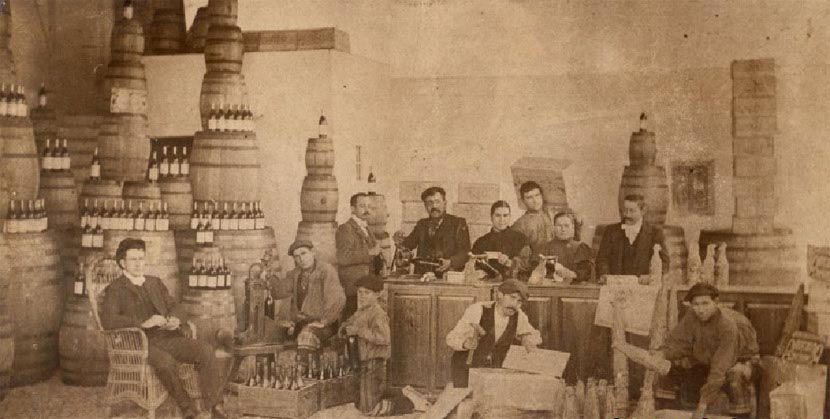
If there is a parade that fully characterizes our Holy Week, it is the Procession of Silence. Celebrated in the small hours of Holy Saturday, several penitents in complete silence walk in procession bearing crosses and dragging heavy chains tied to their feet.
But Tomelloso is not only a city of wine, it is also a city of culture. It is the birthplace of prominent artists, such as Antonio López García, López Torres, García Pavón and Félix Grande; it hosts buildings such as the López Torres Municipal Museum, the House of painter Francisco Carretero, the Municipal Theatre with its intense cultural activity during the entire year, and the Cart and Farming Tools Museum, a magnificent ethnographic centre that pays homage to its history and traditions. We invite you to fully enjoy Tomelloso.
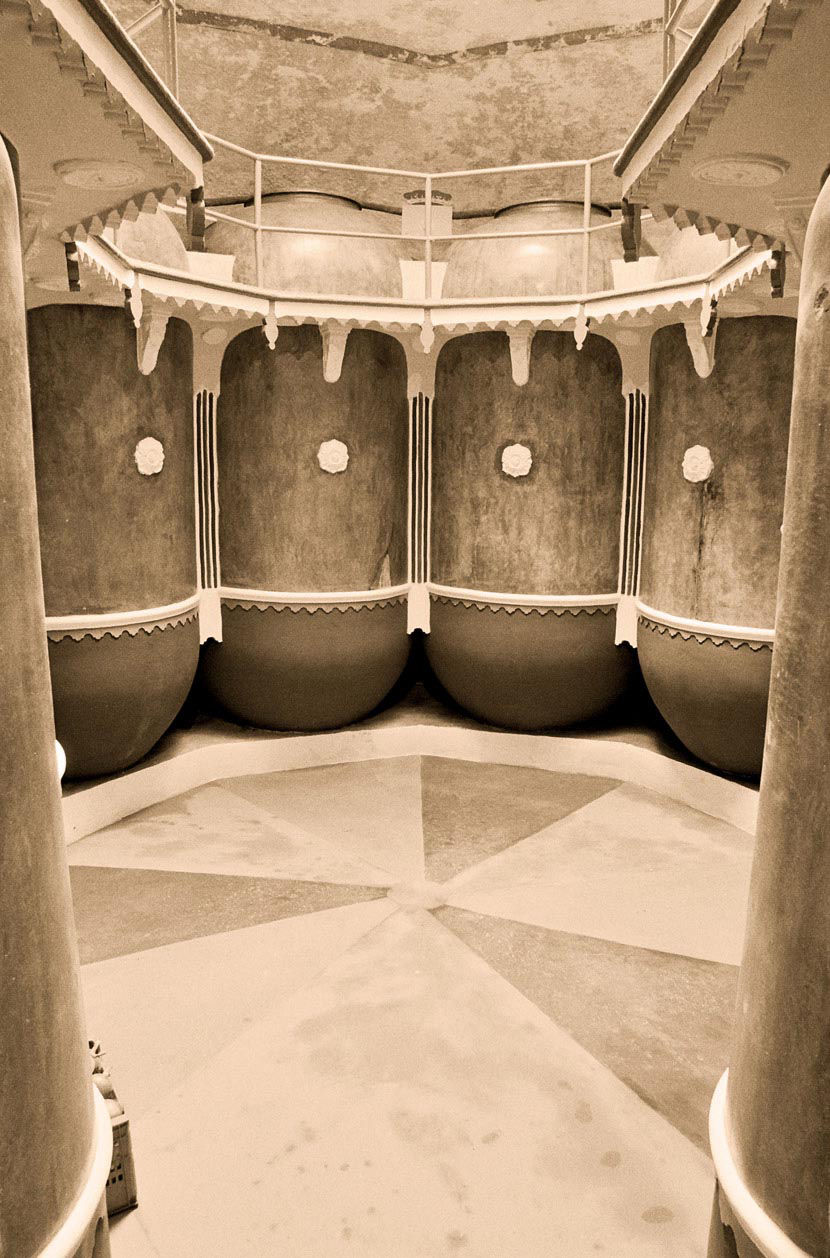
PLACE OF INTEREST
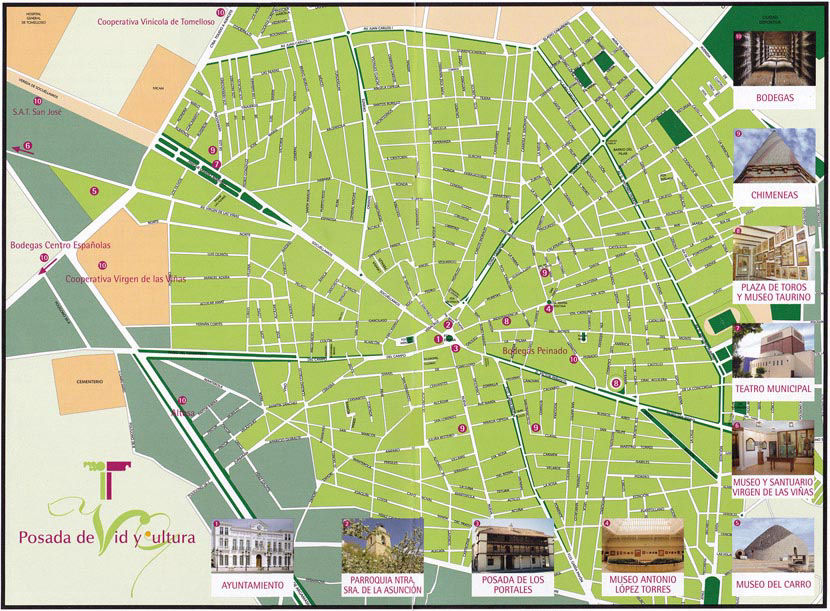
Click here to increase size
The Posada de los Portales
An old inn that was used for accommodating travellers and merchants. It is located at Plaza de España, and its main door faces The Parish of La Asunción.
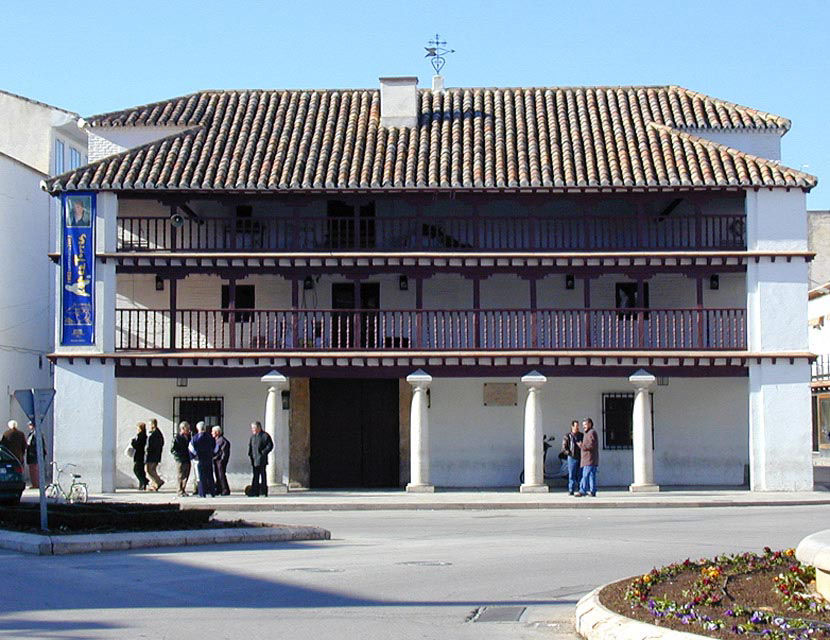
The Posada we can visit with the audioguide was built in the second half of the 17th century as the result of restoration work carried out to what used to be the house of the Rodrigo’s, one of the main landlords in that period. It was used as an inn for accommodating travellers and merchants until the 1960s, year in which the Town Council acquired it. Its original structure has been maintained even though renovation and restoration work have been carried out. Subsequently, it was declared Historical Artistic Monument of Provincial Interest by the Ministerial Order of the 1st of March 1982.
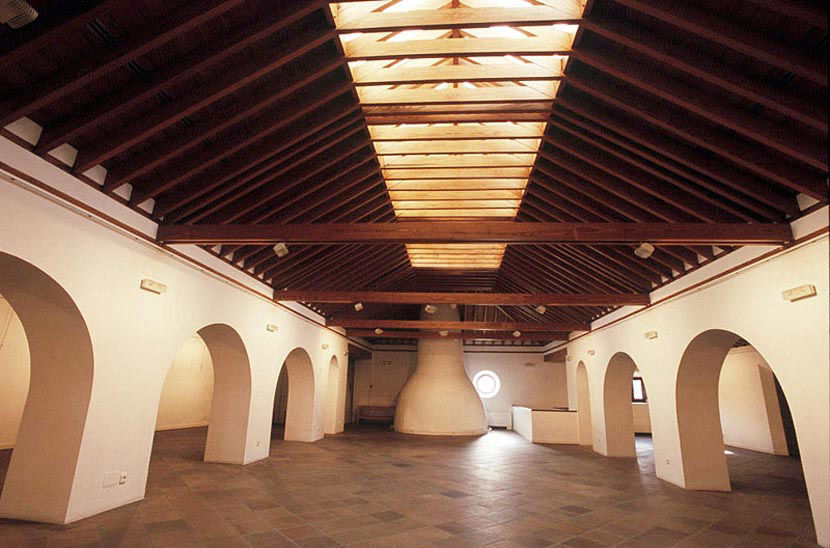
Summer timetable: • Mondays: closed • Tuesday to Saturday: from 12:00 to 14:00 and 18:00 to 21:00. • Sundays and Bank holidays: from 12:00 to 14:00. • Winter timetable: • Mondays: closed • Tuesday to Saturday: from 12:00 to 14:00 and 17:00 to 20:00. • Sundays and Bank holidays: from 12:00 to 14:00.
Town Council
The Municipal Palace is a typical Manchegan building. It was built in 1904 on the remains of a previous building, and it is currently used for institutional purposes.
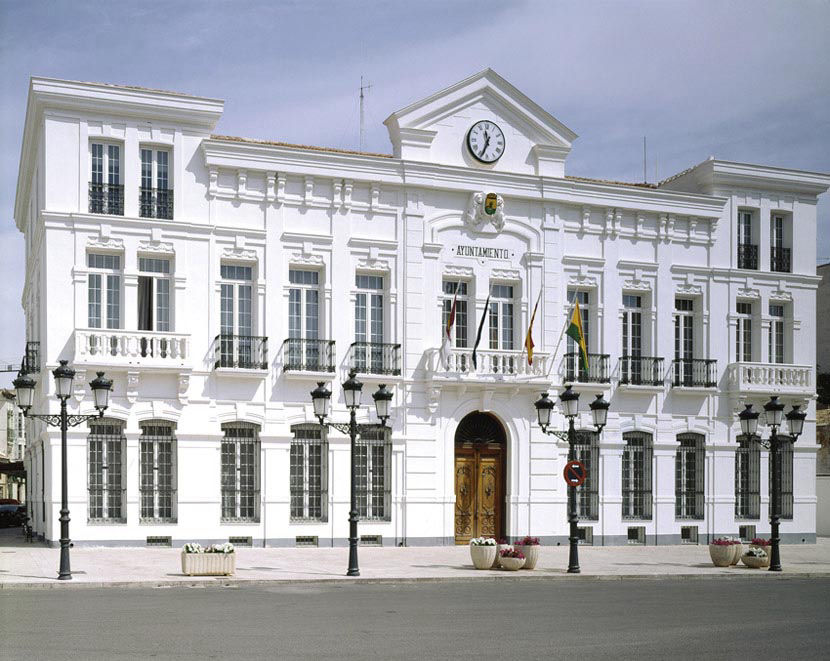
Two rooms worth mentioning are the Chamber of Sessions, whose walls exhibit, indefinitely, the oil painting “Portrait of Francisco García Pavón” by the notable painter Antonio López García, and the Conference Hall, a hall devoted to painter Francisco Carretero housing 8 landscapes and a figurative painting (“El Varal”) by this outstanding local painter.
The Parish of La Asunción
Built in the early 17th century, it is located on the same site where the first church of Tomelloso resided, which was built in 1541 and demolished in 1604.
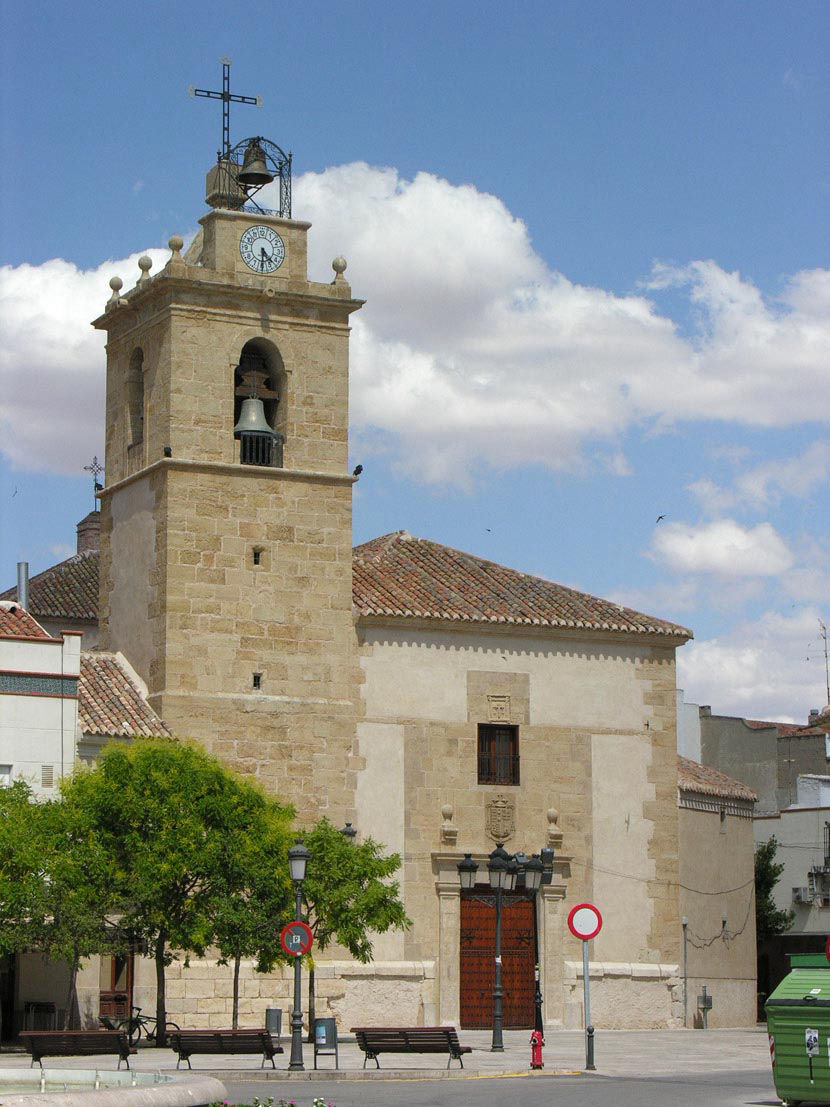
The Parish of La Asunción has been enlarged over different eras until finally maintaining its current setting. It features a Latin cruciform ground plan, a dome, lateral naves, and walls made of masonry, some areas with face brick and others coated with roughcast, although in some parts like the west side of the church, such as the tower and the front door, we can see with the audioguide mainly ashlars. Its façade is currently undergoing major restoration, which is being financed with donations made by individuals (this part omit, as it has already been restored).
• Visiting hours: The Church can be visited during worship service hours. From 8:00 to 13:00 and 19:00 to 21:00.
The Antonio López Torres Museum
At a short distance from Plaza de España, it is accessed from the gardens of Glorieta Mª Cristina, by following the street that features the painter's name since 1962. Free admission.
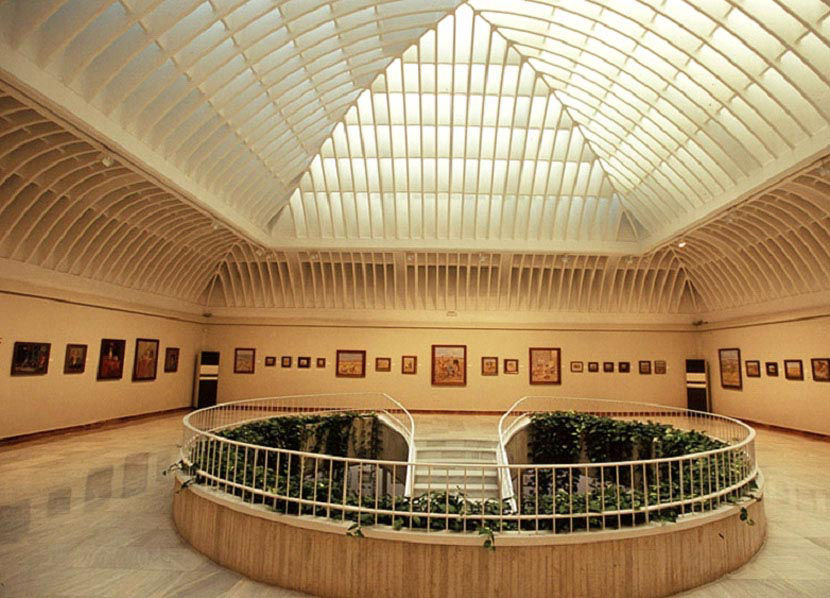
This Museum opens following the express wishes of Antonio López Torres (1902-1987) of donating his works to the city of Tomelloso. The museum houses a permanent collection of oil paintings and drawings given by Antonio López Torres to his city, including a total of 65 oil paintings and 41 drawings distributed in two different halls. In addition, this building has a large Temporary Exhibition Hall and a Municipal Auditorium, featuring a total seating capacity of 250 and a varied and extensive cultural activity.
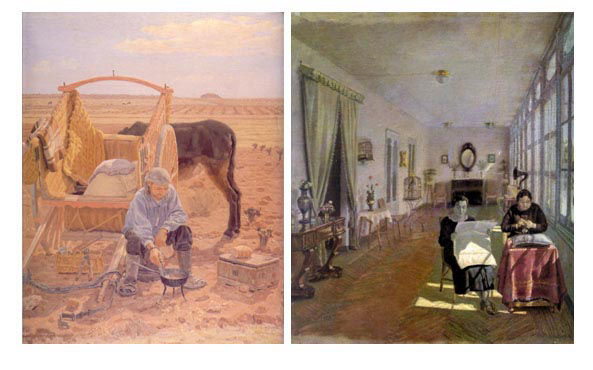
Cart and Farming Tools Museum
Next section of this audioguide, an ethnographic museum located at the city exit towards Pedro Muñoz. Built in the 1960s, it shows us how farmers worked the land and made wine decades ago. Free admission.
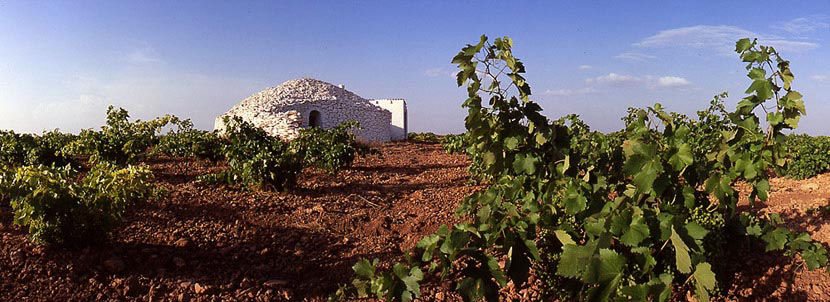
In addition to the typical "cocinilla", several farming tools are preserved in this museum. However, the museum’s crown jewel is the “bombo”, which represents the typical rural construction of Tomelloso. Over 2,000,000 stones were used in this construction.
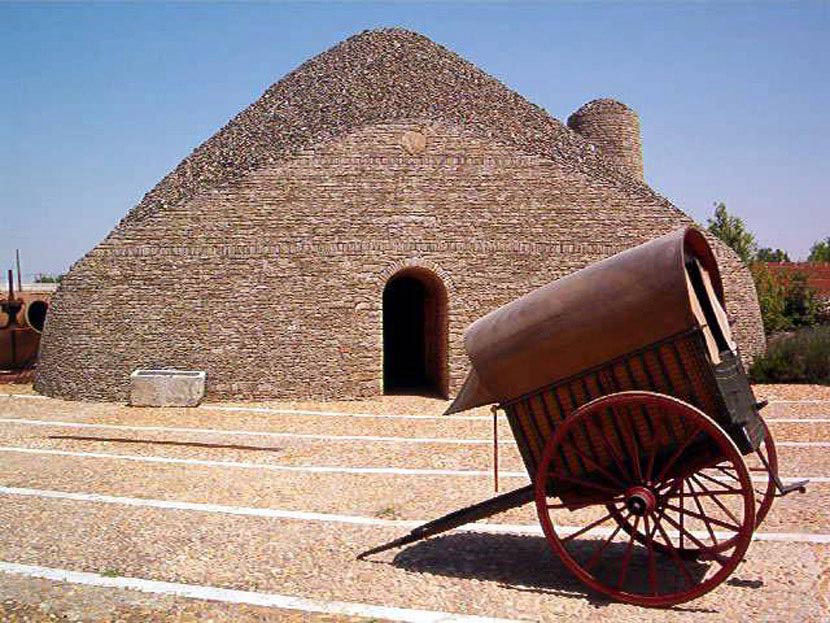
The initiative of building the Cart Museum took place in the 60's with the aim of bringing together the different carts, implements and machinery used in farming.
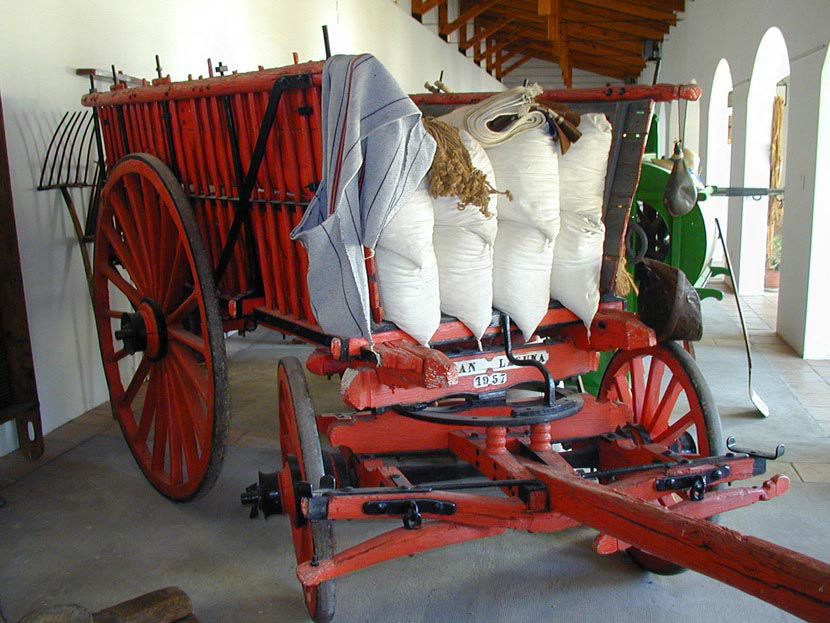
The Town Council of Tomelloso initiated a project of building a Bombo and turned it into a piece of the museum. The works started in1968 with Pablo Moreno as the foreman; he is considered one of the last masters of the region when it comes to using the dry stone technique. For this work, he used over 2,000,000 stones, skilfully placed one over the other without using any kind of mortar, and with the help of José Navarro and Lucio Morcillo. In 1970, Eutiquiano Martínez terminated the works and the Bombo was inaugurated on the 20th of October of the same year.
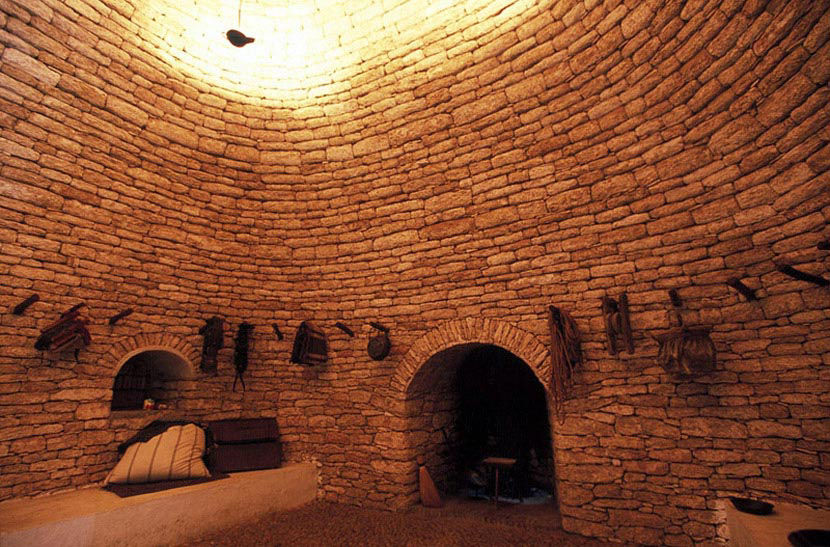
The ‘Cart Museum Appreciation Society’ has been generously supplying it with different kinds of objects. Its tireless and altruistic work in the recovery of traditions and its effort to push this project forward together with the Town Council of Tomelloso is an honour for all the locals as well as a cultural and ethnographic reference of our recent past.
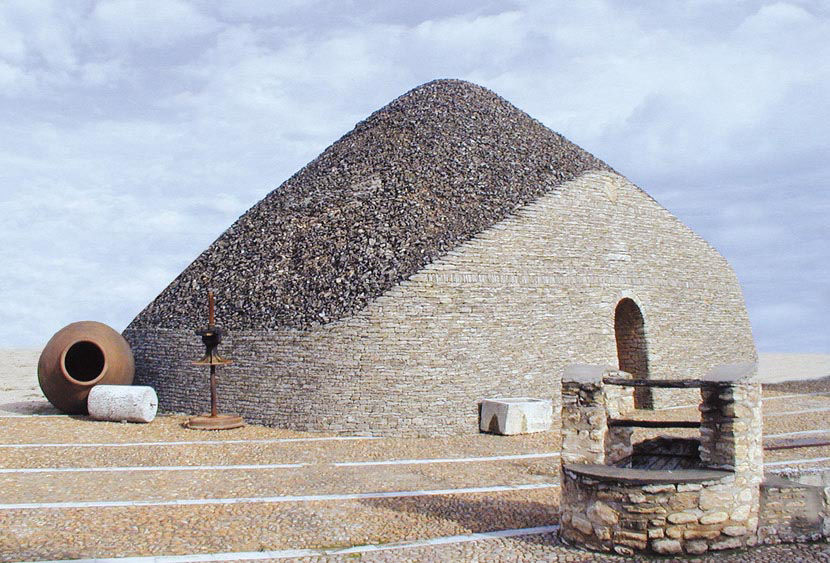
Caves and Wineries
Scholars place their origin in the Roman period, as the Romans were the first who planted vines and transmitted their love for this cultivation. With the vines, preserving wine beneath ground level also arrived.
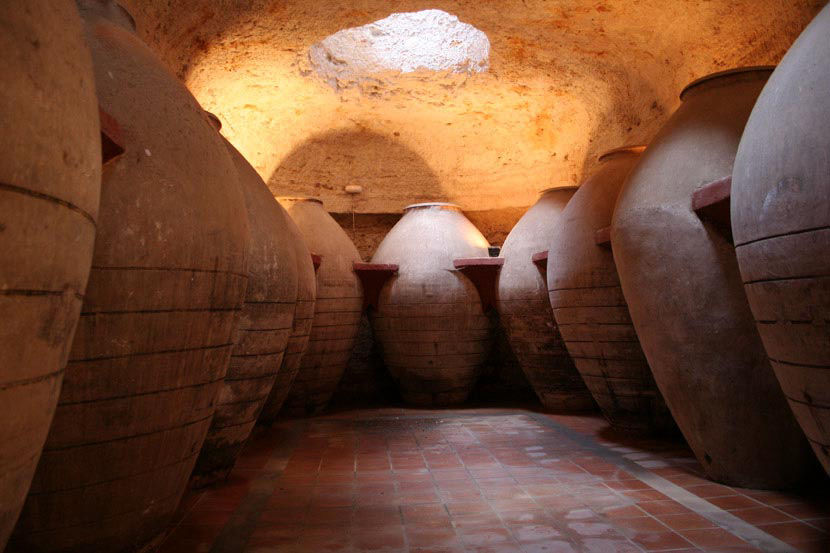
The caves you can visit with the audioguide present optimum qualities for sheltering the harvest and protecting the wine from sudden changes of temperature. The “light shafts” are openings in the pavements covered with grills that catch the attention of visitors. They are cracks made in the cave's vault thus allowing light in perpendicularly to the cave. The caves also stored tools for making wine, large clay amphoras, scales, filters, pumps, etc.
Chimneys
The chimneys of the old alcohol factories are now magnificent monoliths that decorate the urban landscape of the city.
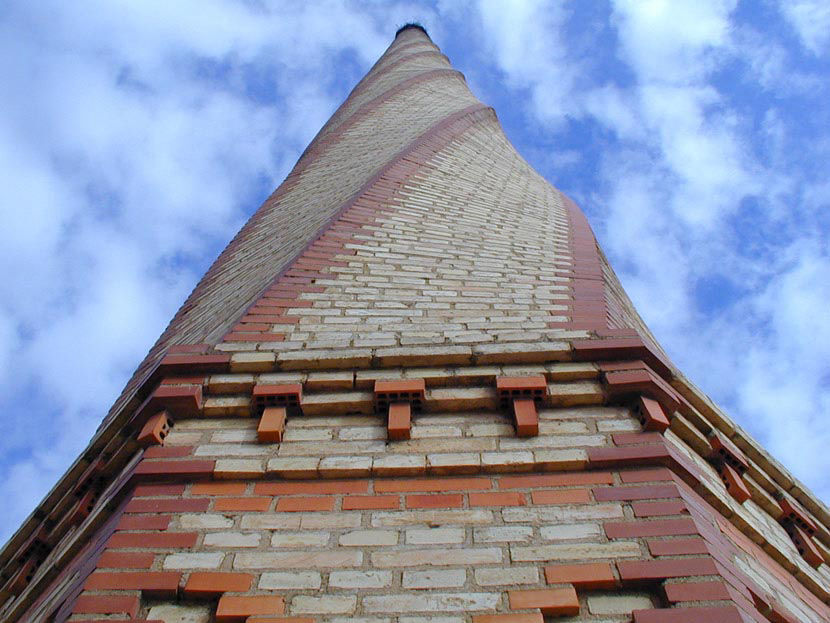
Over one hundred chimneys worked at once in Tomelloso's heyday. Featuring a height of up to 45 metres, they were used as a smoke exhaust for the large boilers that, by means of firewood or coal combustion, provided the suitable temperature for operating the cooling coils of stills in the old distilleries. The chimneys are today assets to be preserved, as they are characteristic elements of an industrial architecture part of a past period, a sign and memory of Tomelloso's industrialisation.
Municipal Theatre
Let's discover with the audioguide a theatre inaugurated in December 2003 and located at Parque Urbano Martínez. A suitable place for theatre, music, dance, opera, zarzuela, etc...
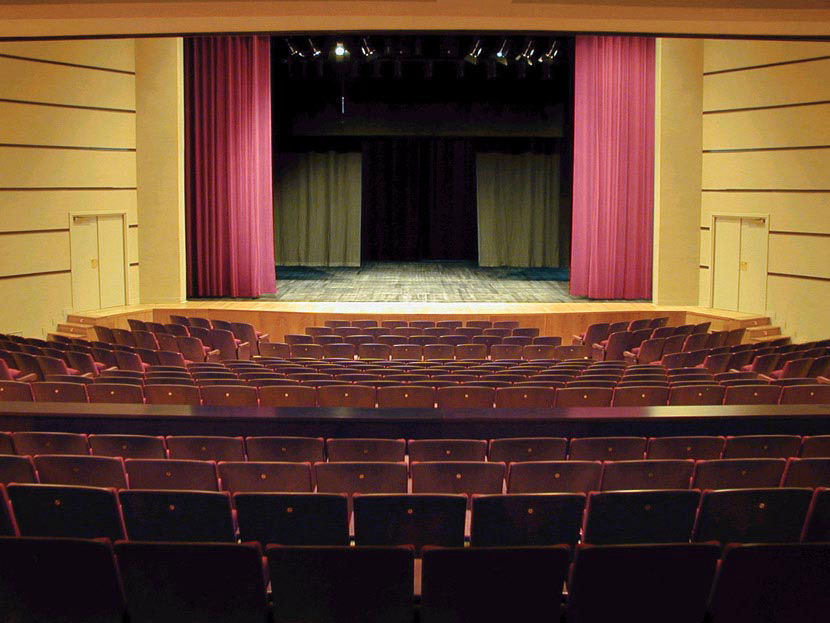
Part of the Network of Theatres of Castilla La Mancha, it has a varied cultural activity and an extensive programme of shows. In November 2005, it housed the world premiere of the Opera "Don Chisciotte" by Manuel García. It has an Orchestra Pit, 4 individual and 4 collective dressing rooms, a loading and unloading dock, and a total seating capacity of 700
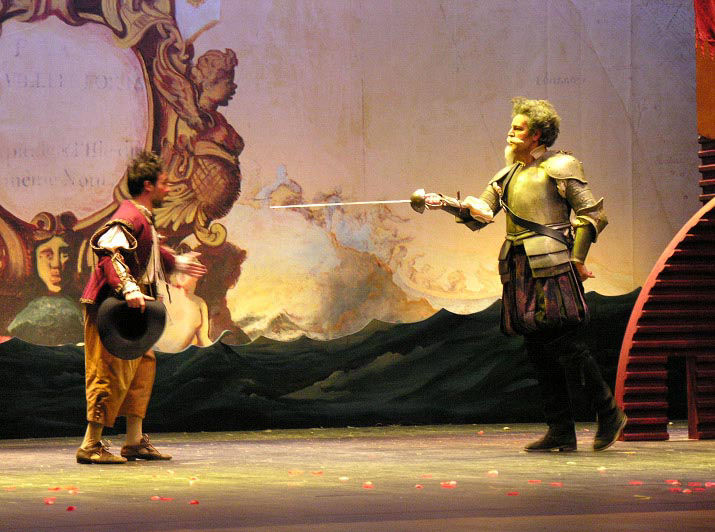
Bull Ring and Bullfighting Museum
Tomelloso has always been a city characterized by its great love for bullfighting. Before the 4th of October 1859, a Festival day in which the old bullfighting ring was inaugurated, bullfighting took place in the streets by putting up planks of wood.
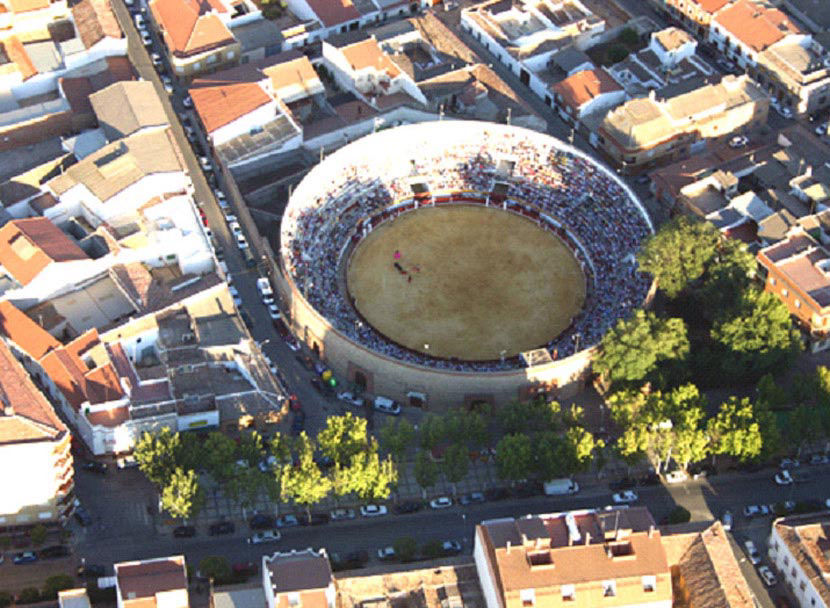
The bullfighting ring you can see with the audioguide was built with local stone in the south of the city, where the Festivals and Fiestas were celebrated. The construction of the bullring is a great example of the enormous love that the sons and daughters of Tomelloso have always showed for bullfighting. One of the oldest in Spain, the fact that it was erected before considering street lighting, which was carried out in 1861 by installing 24 streetlights and 4 oil-lamps for night watchmen, is a good example. The Bullfighting museum is at the headquarters of Tomelloso's Bullfighting Club, which after hard work and considerable sacrifice was inaugurated on the 26th of August 2002.
Virgen de las Viñas Museum and Sanctuary
Located at 4 km. from Tomelloso within the Pinilla enclosure, which is accessed from Pedro Muñoz. Within the Pinilla enclosure, we can find the Virgen de las Viñas Museum and the largest forest stand in the entire municipality, which includes three extensive pine forests.
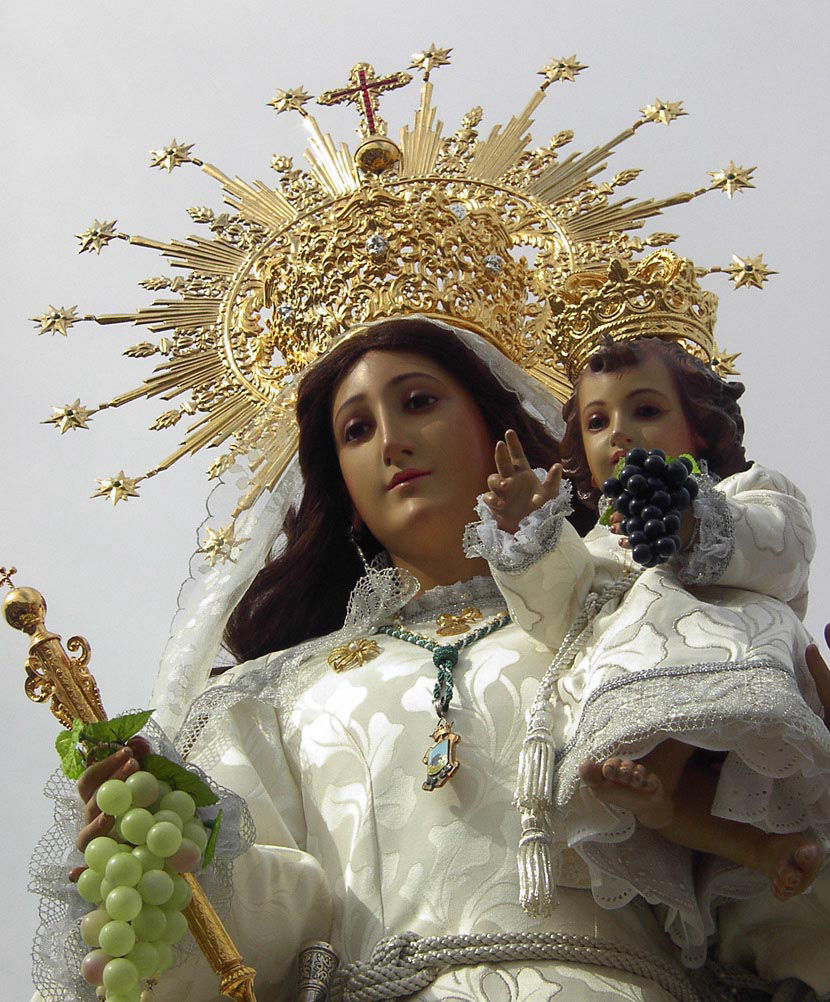
The Hermitage is a transeptal nave presided by a beautiful image of the Santísima Virgen de las Viñas. From its doors, made with wrought iron and stained-glass windows, its furniture, its stained-glass windows featuring the four evangelists, to the roof painting of the Camarín de la Virgen, a genuine piece of art carried out by Ezequiel Cano, are well worth seeing. The museum houses photographs and documents from the 1940s, which is when Tomelloso received its Patron saint. Four cabinets display dresses, cloaks, mantillas, standards and flags of the Virgin, as well as candle holders and sacristy items, and the Golden Book of the Brotherhood that dates back to 1942.
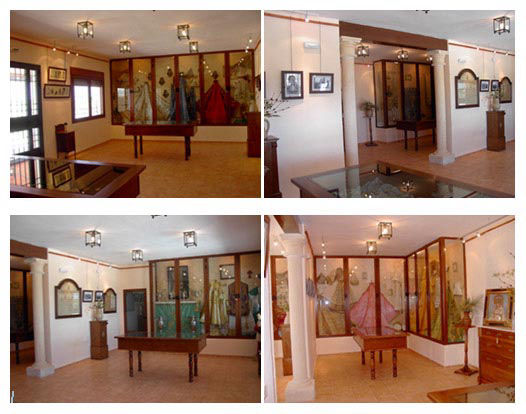
FESTIVALS
PROCESSION
Next section of this audioguide, the last Sunday of April, a Procession is celebrated in honour of the Patron Saint of Tomelloso, the Virgen de las Viñas, in the sanctuary of Pinilla, which is four kilometres from the city towards Pedro Muñoz. There is a tradition of making floats reflecting local current affairs or some characteristic aspects of the city and green floats, which are agricultural trailers decorated with branches and full of people ready to have a great time in the countryside.
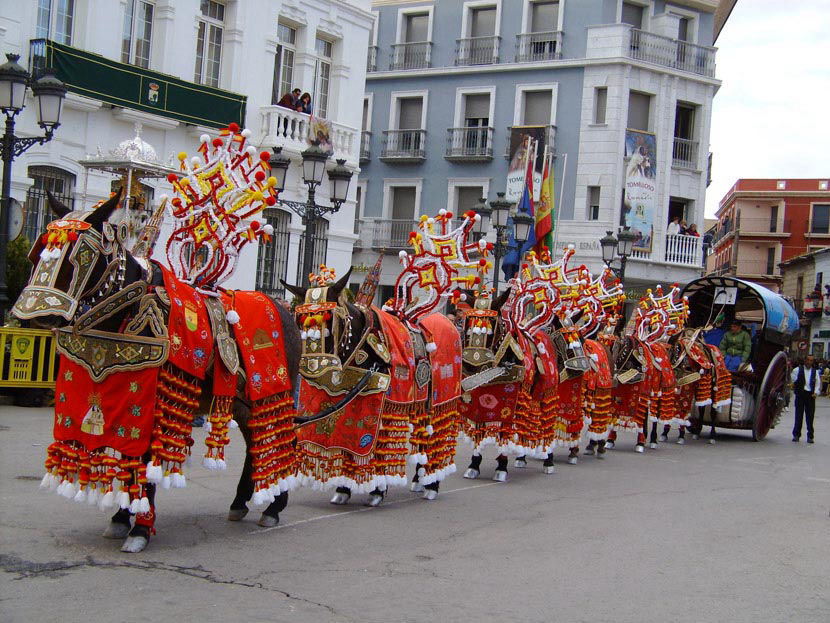
However, the most characteristic and distinguishing aspect of the Procession is the "reatas enjaezadas - harnessed packs", which are carts pulled by decoratively dressed mules.
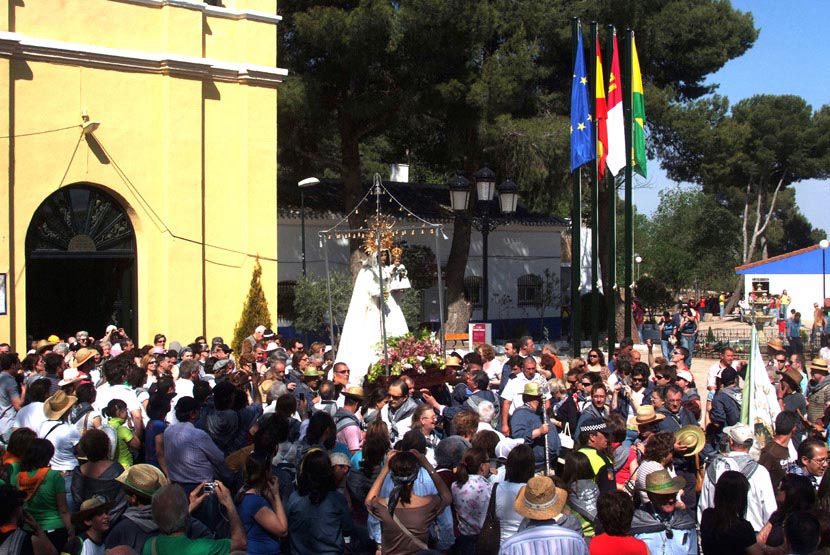
FESTIVAL AND FIESTAS
The Festival and Fiestas of Tomelloso take place from the 24th to the 30th of August and are one of the most important in Castilla La Mancha. The Semana Grande is a week in which the Fiestas are lived at a frenetic pace and the neighbours come out to the streets and enjoy a fiesta traditionally known as “La Feria”. All kinds of activities are organised for different tastes and audiences, from Agrifood Conferences, to several sport competitions and exhibitions, a traditional market, artistic performances in Plaza de España and Jardines del Parque. Religious acts also take place, such as the procession that passes through the main streets of the city and the Religiosa, which is celebrated in the morning of the 25th at The Parish of La Asunción in honour of the Patron Saint and the Honorary Mayoress of the city Virgen de las Viñas.
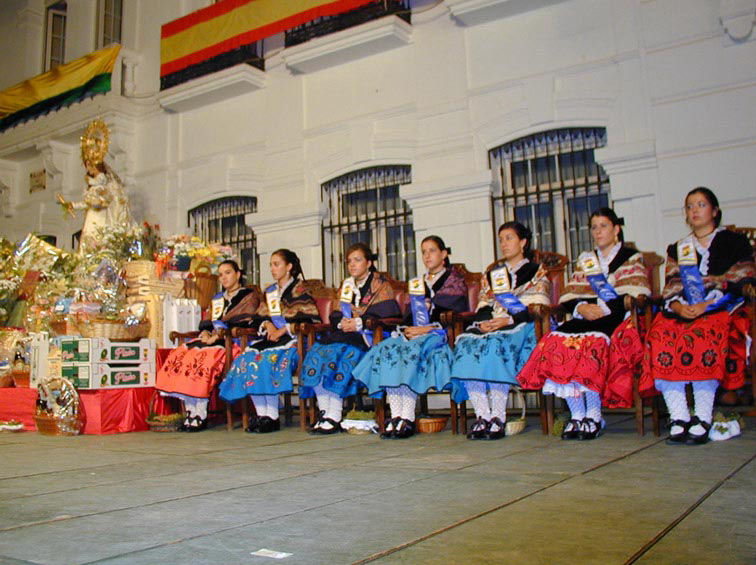
The inauguration events of this Semana Grande start on the night of the 24th in Plaza de España with the soulful event “The Fiesta of the Grape Harvest”, in which the first musts are obtained, the offering to the Virgin takes place and the inauguration announcement is carried out by an important personality in the cultural sphere. Regarding cultural activities, the fiestas open with the reputed International Folklore Festival and close magnificently with the Literary competition "Fiesta de las Letras", which is highly prestigious due to its over half-century existence. The audioguide continues in the next section.
CARNIVAL
The typical expression of Tomelloso’s Carnival has been enhanced by the sparkling carnival parades that take place during these days. The school carnival group parade, with the participation of over two thousand children, parents and teachers displaying an exhibition of imagination and colour, has been declared of regional tourist interest. A special mention must be made to the carnival group parade, where the large “peñas” from our city and its surroundings stand out.
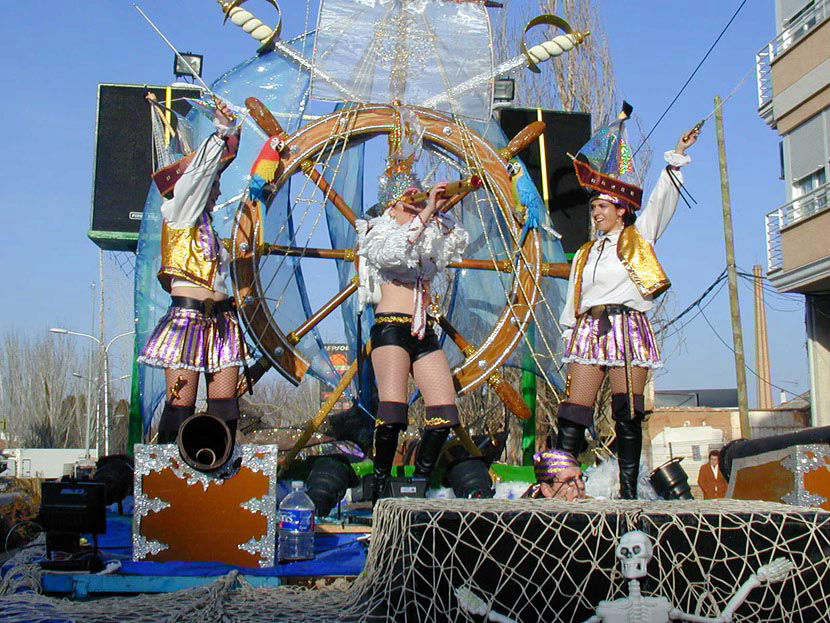
HOLY WEEK
Highlight of this audioguide, easter processions, with the intervention of 12 Brotherhoods and Fraternities, stand out in Tomelloso due to their sobriety and participative spirit. The processional floats are carried by the bearers on their shoulders to the singing of "saetas".
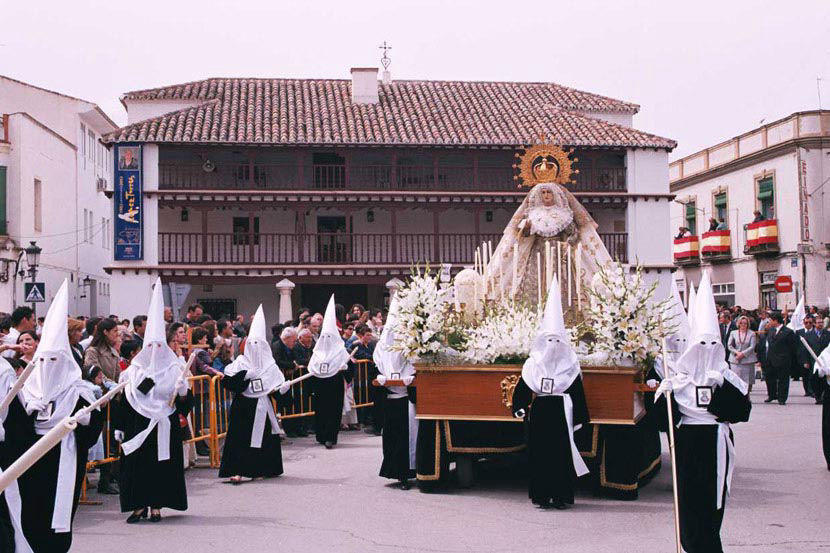
If there is a parade that fully characterizes our Holy Week, it is the Procession of Silence. Celebrated in the small hours of Holy Saturday, several penitents in complete silence walk in procession bearing crosses and dragging heavy chains tied to their feet.
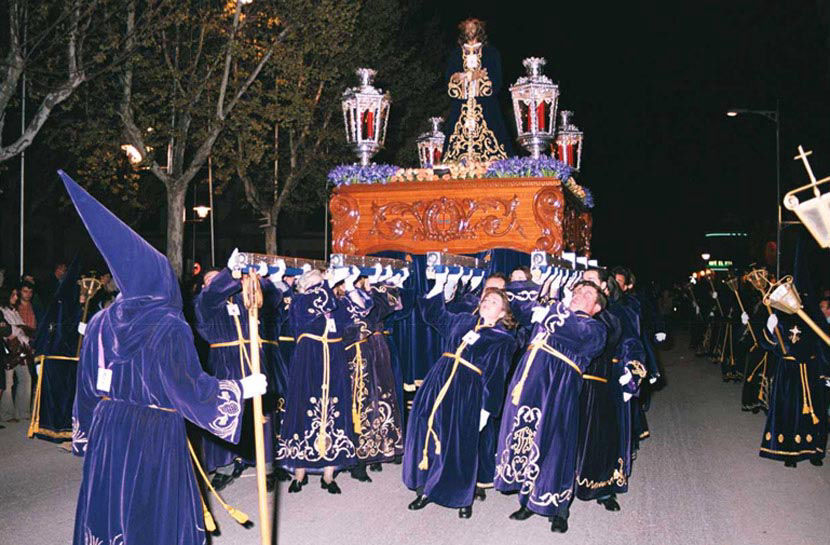
Bluehertz Audio guides has developed for Tomelloso´s town hall an audio guide service avaliable for mobiles and smartphones avaliable in Spanish, English and French languages. Also has developed an audioguide for Tomelloso´s Cart and Farming Tools Museum avaliable in Spanish, English and French languages.
Tomelloso´s Tourist Office address: Plaza España, s/n Posada de los Portales, 13700 Tomelloso, Ciudad Real.
- Tel.: 926 52 88 01 - www.tomelloso.es/turismo - turismo@aytotomelloso.es -
Back to index